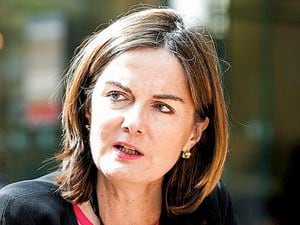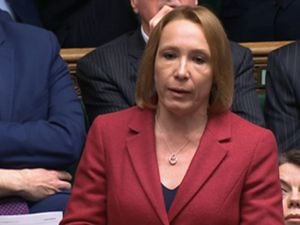Fighting for the heart of a divided Labour Party
Voting has started in the Labour leadership race – and already the contest is in danger of looking like one big lefty love-in.

“I think they’re both brilliant,” Rebecca Long-Bailey gushed about Sir Keir Starmer and Lisa Nandy, confirming she would offer them positions in her shadow cabinet should she be elected.
Ms Nandy was also full of praise for her opponents, saying: “I like both of these people. I respect them,” while self-proclaimed unity candidate Sir Keir went a stage further, insisting “together, the three of us will be the leadership of the Labour party”.
In many respects it makes a pleasant change for Labour politicians not to be “taking lumps out of each other”, as Sir Keir put it, particularly after the vitriol that followed the party’s calamitous general election result.
A minor row between the Starmer and Long-Bailey campaigns aside, the contest has for the most part been fought on policy and each candidates’ plans for Labour’s future.
But in reality this is hardly a clash of the titans. Two of the candidates have serious flaws.
Likely winner Sir Keir, as the man behind Labour’s disastrous approach to Brexit, made a sizeable contribution to his party’s defeat in December.
Ms Long-Bailey comes across as Corbyn v.2 and appears to be hopelessly out of touch with British voters.
Analysis
Ms Nandy has arguably impressed the most. The 40-year-old Wigan MP has at least delivered an analysis of her predecessor’s failings. She also appears willing to genuinely listen to voters who have deserted her party.
However, there are question marks over whether any of them have what it takes to make a still markedly divided Labour into an electoral force.
There is still a widely-held suspicion that in many quarters, Labour would rather have a hard-left loser than a moderate candidate who might actually be able to win an election.
Too many members are still in thrall to Mr Corbyn.
They are happy to sneer at people who have not bought into their hard-left ideology, deriding them as “gammons” while offering no persuasive argument to bring them on side.
Tellingly, in a recent poll by Lord Ashcroft examining the reasons behind Labour’s failure in the election, more than seven in 10 members said they believed anti-Semitism was “invented or wildly exaggerated by the right-wing media and opponents of Jeremy Corbyn”.
Far from learning any lessons from December’s defeat, their resolve has been hardened. They were right, the country was wrong.
Whoever triumphs on April 4 has a mountain to climb if they are to successfully challenge such views.
The winning MP will undoubtedly be full of bold ideas, but in reality the task in hand will be to bring some degree of stability to the Labour Party and hope that the Tories make a mess of things.
As things stand, the latter is probably more likely to happen than the former.
Who are the candidates?
Sir Keir Starmer, Lisa Nandy and Rebecca Long-Bailey are running for the top job. And in the deputy race, it’s Angela Rayner, Dawn Butler, Ian Murray, Dr Rosena Allin-Khan and Richard Burgon.
How did they end up this far?
Firstly, they won the backing of at least 22 MPs or MEPs apiece to make it into the second round. Then they had two routes to pursue. They could either win nominations from five per cent of Constituency Labour Parties (CLPs). Or they had to get the support of three affiliated socialist organisations, including two unions. These groups had to be large enough to represent at least five per cent of affiliated members.
Who can vote?
The party membership, which stood at more than 580,000 after the general election, each get a single and equal vote. So do supporters who have paid a fee to take part. They have until noon on April 2 to make their voices heard.
How does it work?
The ballot papers begin being emailed out on Monday, but those who have asked to vote on paper will have slips sent out to them in the post. They are being sent in batches throughout the week. The system used is a preferential vote, so if no candidate wins more than 50 per cent in the first round, then the candidate in last place is eliminated and their votes redistributed until the threshold is reached.
When will the winners be announced?
A special conference is scheduled for April 4. At that, the pair to lead the party after its worst general election defeat since 1935 will be announced. They will assume the roles immediately, leaving Mr Corbyn to return to the backbenches unless the winner wants him in their shadow cabinet.
Who are the favourites?
Sir Keir is the clear frontrunner. He won more than double the amount of CLP support than second-placed Ms Long-Bailey. He performed the strongest in winning the support of unions and affiliated socialist organisations. Ms Rayner has been similarly dominant in the deputy race. But there are still more than six weeks to go and that can be an age in politics.





